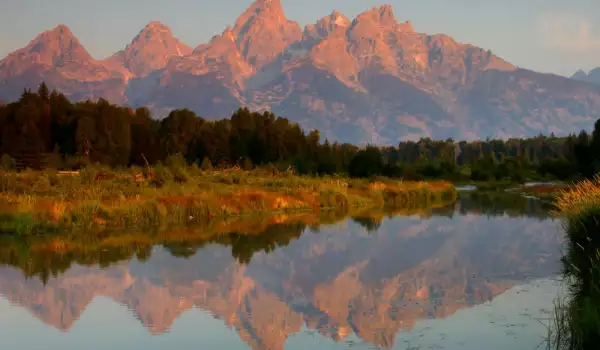Snake River

Snake River is the largest and longest tributary of the Columbia River, which is the largest river in the U.S. and flows into the Pacific Ocean. Snake is the largest river in the region of northwestern North America, being a left tributary of the Columbia. Snake River Canyon is characterized by steep mountains, low hills, alluvial sediments and interesting geological deposits.
The Snake River Plain, formed in the floods of the last Ice Age, is now a popular place for various studies. At that time, the popular Hells Canyon (the deepest in the world with its 2436 m) and gentle hills of Palouse Hills were formed, and then developed as an agricultural region.
Snake River rises near the main watershed of North America in Yellowstone National Park, in North Wyoming. From there, it goes south to Jackson Lake, in Grand Teton National Park. Snake River runs along the city of Jackson and heads, then forming the Snake River canyon. It passes through Idaho, where it flows into the river Henry’s Fork, near the town of Rugby.
Its length amounts to 1670 km and its catchment basin is about 282.3 thousand square km. The average annual flow of water is about 1390 m³/s. The river is navigable to Louis town. The River Canyon of Idaho forms the beautiful Shoshone Falls. It reaches a height of 64.7 meters, this magnificent natural wonder is located about 8 km east of Twin Falls, in the U.S. state of Idaho. The width of the crest of the Shoshones amounts to 274 m, and the waterfall is visited annually by over 3 million tourists.
With its size, Snake River is the thirteenth largest in the U.S. and runs through the territory of Wyoming, Idaho, Nevada, Utah, Oregon and Washington, with the largest share in Idaho. 41% of the water flow of the Columbia River is from its largest tributary. Snake River’s lands have been inhabited since 11, 000 years ago, by prehistoric Indians. Their livelihood comes mainly from salmon, which enters the Snake from the Pacific Ocean through the Columbia River. Salmon was the main source of livelihood for the people who inhabited the area of Shoshones.

The largest tributary of the Snake River is Salmon River and it was discovered by the Lewis and Clark Expedition in 1804-1806, it was is the first major study of the river. Later, in 1833, it was studied by Benjamin Lewis Boneville. Snake River had many names over the centuries, one of them was Louis. Snake and Salmon meet around the midpoint of the Hell's Canyon.
Tourism along the Snake develops within the Yellowstone National Park, Grand Teton National Park, and the Hells Canyon National Recreation Area. Snake goes past many farms, which are a major source of pollution to the river. Snake River can be defined as the realm of contemporary rafting. This started back in 1811 as a quick and inexpensive way to transport logs on the Snake River in Wyoming, today this water sport is one of the most practiced in the river.
Snake in Idaho has a bridge called Perrin. Reaching 148 m height and associated connecting areas of the coast of Twin Falls and Jerome, this bridge is one of the most popular places in the world for bungee jumping.















